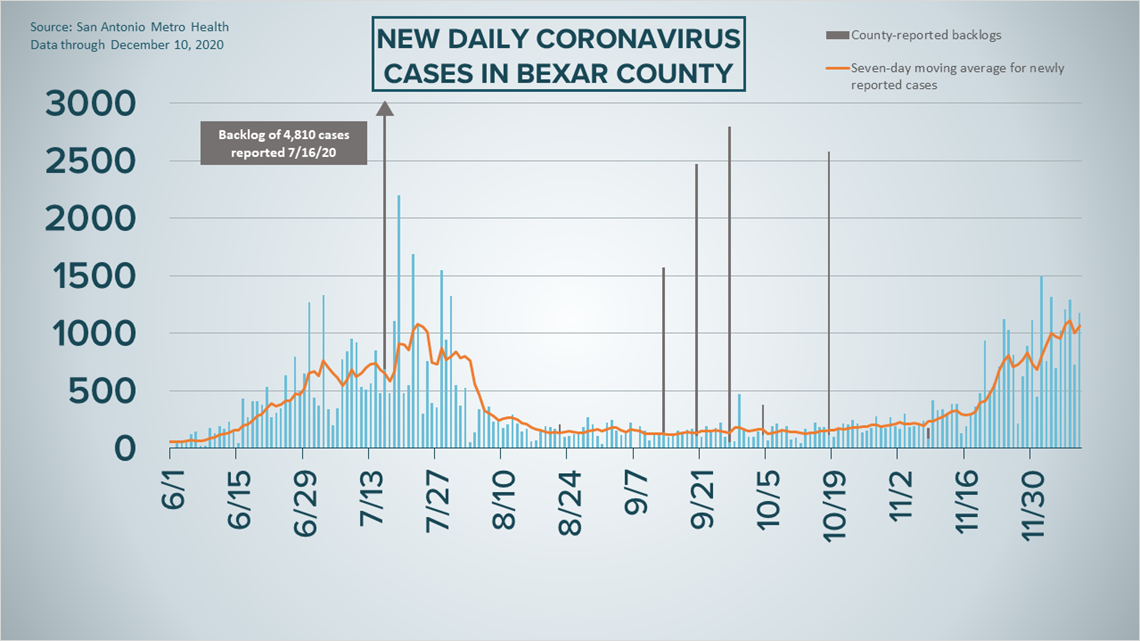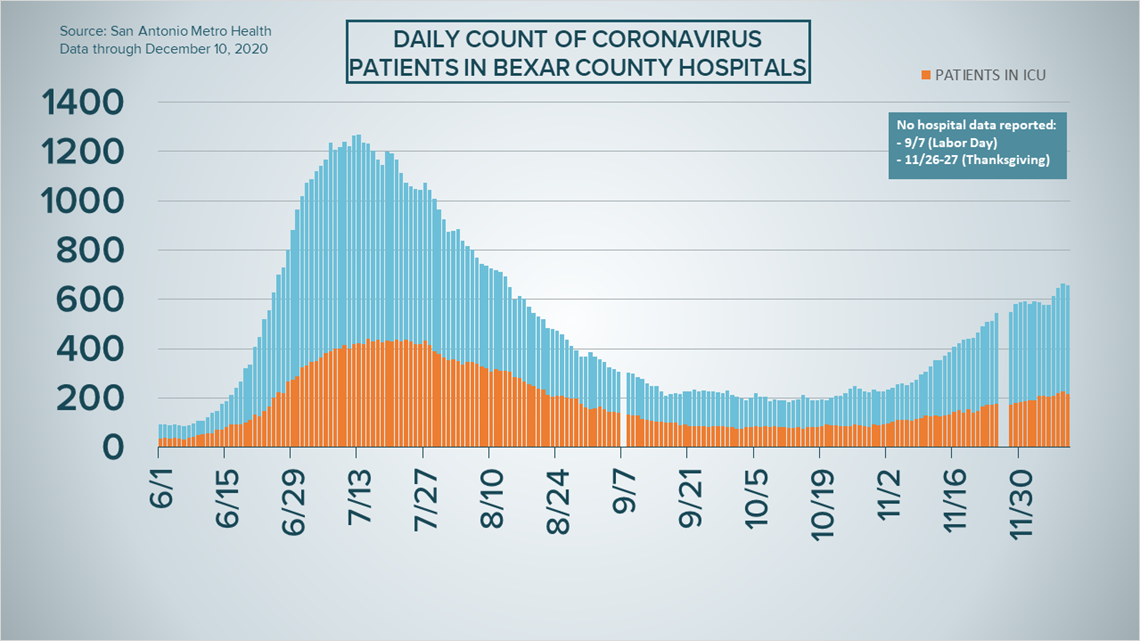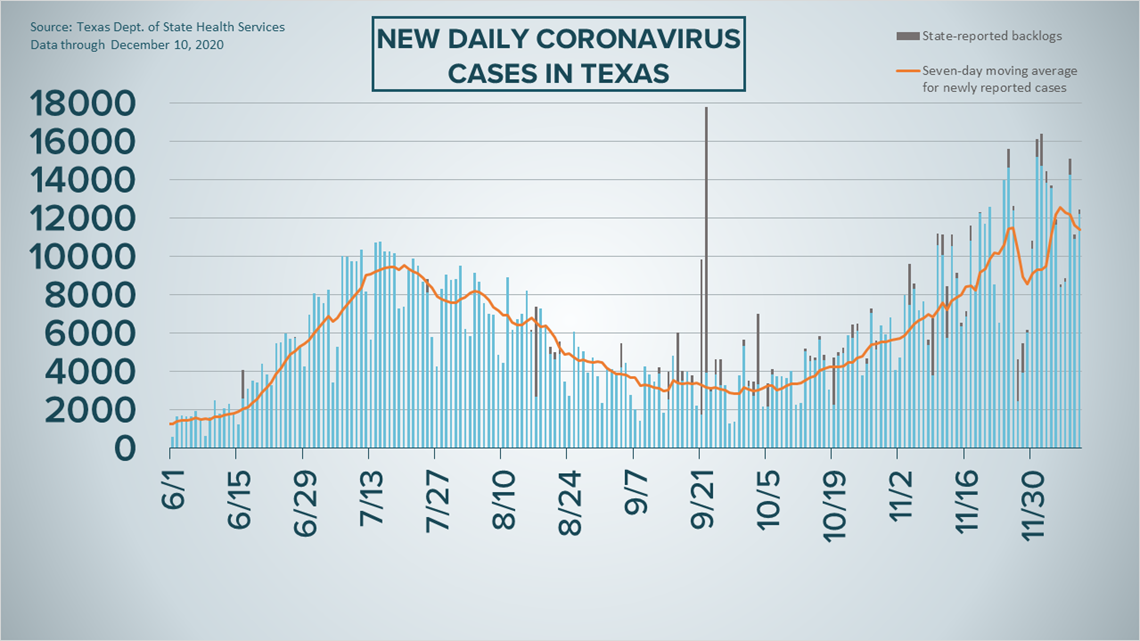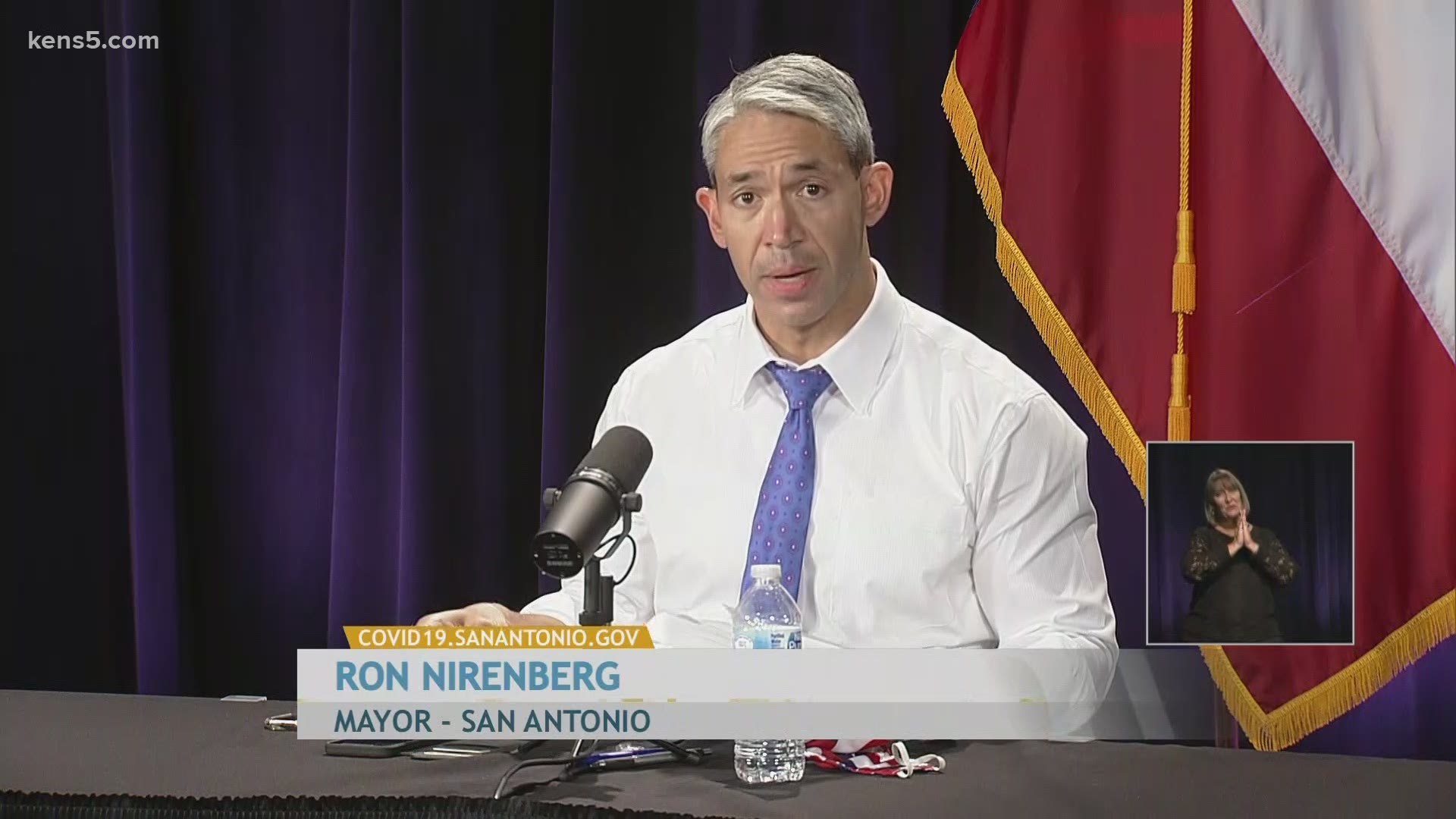SAN ANTONIO — We're tracking the latest numbers from the coronavirus pandemic in San Antonio and across Texas. Here are the latest numbers reported by Bexar and surrounding counties:
- Bexar County: 1,174 new cases were reported on Thursday, bringing the total number of cases to 91,394. Six new deaths were reported, raising the death toll to 1,412.
- Hays County: Officials in Hays County on Thursday reported 103 new cases in the county and no additional COVID-related fatalities. As of Thursday, there are a total of 8,049 lab-confirmed local cases (982 of which are active), while the death toll remained at 107. 6,960 residents have recovered from the virus.
- Comal County: Comal County reported an additional 72 coronavirus cases – 48 confirmed, 23 probable – on Thursday, bringing its total to 5,206. Officials also tallied two more coronavirus-related fatalities, bringing the death toll for the county to 135. The county estimates 636 active cases on Thursday, while 4,404 residents have recovered.
More county case information is available through the Texas Department of Health Services COVID-19 dashboard.
How Bexar County is trending
We've tracked how many coronavirus cases have been confirmed in Bexar County from the time officials began reporting cases in March 2020. The graphic below shows the number of cases since June and charts those daily case numbers along a 7-day moving average to provide a more accurate picture of the overall coronavirus case curve in our area and the direction we're trending amid the pandemic.
On Thursday evening, Mayor Ron Nirenberg reported an additional 1,174 coronavirus cases, the second time in three days that at least 1,000 cases have been tallied in the community. A total of 91,394 county residents have been diagnosed in the ongoing pandemic, and the seven-day moving average for daily cases went up from 1,004 to 1,063.
Nirenberg also reported six more deaths from coronavirus complications; at least 1,412 Bexar County residents have died from COVID-19.


Meanwhile, hospitalizations in our area decreased by five. On Thursday, 658 patients are receiving treatment for COVID-19 symptoms at area hospitals. Of those 658, 115 patients are ventilators and 214 are in intensive care.


Coronavirus in Texas
The total number of novel coronavirus cases in the state since the pandemic began grew by 14,177 on Thursday, according to the Texas Department of State Health Services.
That total includes 12,211 new confirmed cases and 335 cases attributed to backlogs not previously reported in the state's total (more details can be found at the top of this page).
As of Thursday, 1.364 million Texans have been diagnosed with COVID-19. Of those, 1.296 million diagnoses are confirmed via molecular testing, while another 67,963 are positive antigen tests.


State health authorities also reported 244 additional virus-related deaths on Thursday, the second day of at least that many fatalities. At least 23,325 Texans have died from COVID-19 complications.
The number of COVID-19-related hospital patients remains virtually unchanged, with eight fewer patients on Thursday; in all, 9,045 Texans are receiving treatment at hospitals for coronavirus symptoms. Meanwhile, the state estimates that 1.075 million Texans have recovered, while 202,666 Texans remain ill with COVID-19.
The latest update from the Texas Education Agency showed that there have been 65,552 cumulative cases among staff and students across the state through Nov. 29. That number comprises 40,985 positive student cases and 24,567 staff cases. More information can be found here.
The TEA releases new data on school cases on Fridays.
Latest Coronavirus Headlines
- US experts OK Pfizer coronavirus vaccine; Emergency authorization expected soon
- Nirenberg, Wolff request governor prioritize teachers, faculty for COVID-19 vaccination
- Ellen DeGeneres tests positive for COVID-19
- VERIFY: New COVID-19 vaccines won't cause you to be infectious
- Moderna begins testing COVID-19 vaccine in US adolescents
- US reports single-day record for coronavirus deaths
- Wear The Gown: More men need to be tested for coronavirus
- How Texas businesses have fared so far during the COVID-19 pandemic
Coronavirus symptoms
The symptoms of coronavirus can be similar to the flu or a bad cold. Symptoms include fever or chills, cough, shortness of breath or difficulty breathing, fatigue, muscle or body aches, headache, new loss of taste or smell sore throat, congestion or runny nose, nausea or vomiting and diarrhea, according to the Centers for Disease Control.
Most healthy people will have mild symptoms. A study of more than 72,000 patients by the Centers for Disease Control in China showed 80 percent of the cases there were mild.
But infections can cause pneumonia, severe acute respiratory syndrome, kidney failure, and even death, according to the World Health Organization. Older people with underlying health conditions are most at risk.
But infections can cause pneumonia, severe acute respiratory syndrome, kidney failure, and even death, according to the World Health Organization. Older people with underlying health conditions are most at risk.
Experts determined there was consistent evidence these conditions increase a person's risk, regardless of age:
- Chronic kidney disease
- COPD (chronic obstructive pulmonary disease)
- Obesity (BMI of 30 or higher)
- Immunocompromised state (weakened immune system) from solid organ transplant
- Serious heart conditions, such as heart failure, coronary artery disease, or cardiomyopathies
- Sickle cell disease
- Type 2 diabetes
The CDC believes symptoms may appear anywhere from two to 14 days after being exposed.
Human coronaviruses are usually spread...
- Between people who are in close contact with one another (within about 6 feet).
- Through respiratory droplets produced when an infected person coughs, sneezes or talks. These droplets can land in the mouths or noses of people who are nearby or possibly be inhaled into the lungs.
- Some recent studies have suggested that COVID-19 may be spread by people who are not showing symptoms.
Help stop the spread of coronavirus
- Stay home when you are sick.
- Eat and sleep separately from your family members
- Use different utensils and dishes
- Cover your cough or sneeze with your arm, not your hand.
- If you use a tissue, throw it in the trash.
Find a Testing Location
City officials recommend getting a COVID-19 test if you experience fever or chills, cough, shortness of breath or difficulty breathing, fatigue, muscle or body aches, headache, new loss of taste or smell, sore throat, congestion or runny nose, nausea or vomiting, or diarrhea.
San Antonio operates several no-cost testing locations, including two walk-up locations open Monday-Sunday from 10 a.m. until 2 p.m.:
Cuellar Community Center
5626 San Fernando St.
San Antonio, TX 78237
Ramirez Community Center
1011 Gillette Blvd.
San Antonio, TX 78224
Additionally, Freeman Coliseum offers drive-through no-cost testing from Monday through Sunday between 9 a.m. and 4 p.m. An appointment is required and can be made either online or by calling (833) 213-0643.
Here's a Testing Sites Locator to help you find the testing location closest to you in San Antonio.

